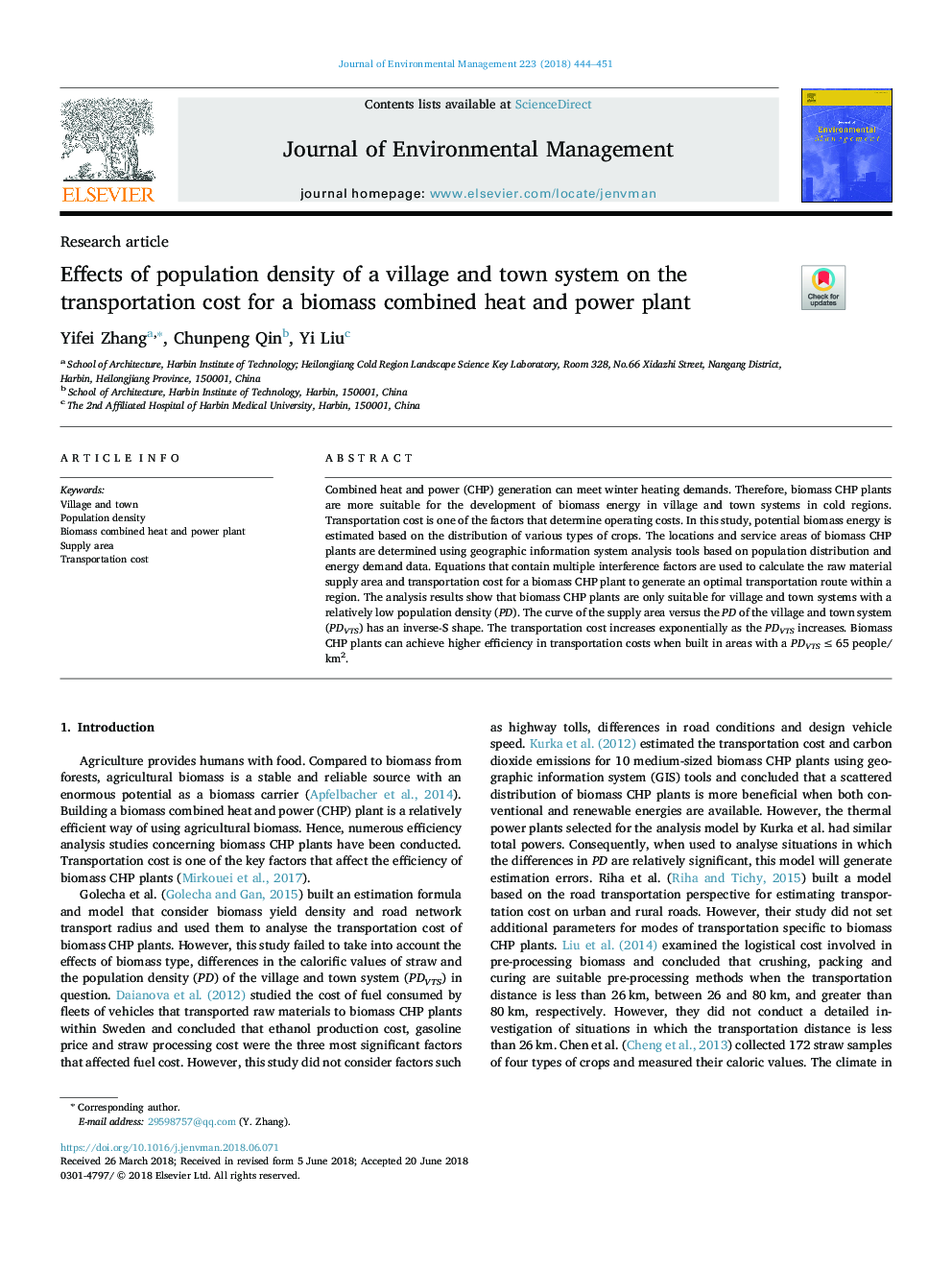| Article ID | Journal | Published Year | Pages | File Type |
|---|---|---|---|---|
| 7475919 | Journal of Environmental Management | 2018 | 8 Pages |
Abstract
Combined heat and power (CHP) generation can meet winter heating demands. Therefore, biomass CHP plants are more suitable for the development of biomass energy in village and town systems in cold regions. Transportation cost is one of the factors that determine operating costs. In this study, potential biomass energy is estimated based on the distribution of various types of crops. The locations and service areas of biomass CHP plants are determined using geographic information system analysis tools based on population distribution and energy demand data. Equations that contain multiple interference factors are used to calculate the raw material supply area and transportation cost for a biomass CHP plant to generate an optimal transportation route within a region. The analysis results show that biomass CHP plants are only suitable for village and town systems with a relatively low population density (PD). The curve of the supply area versus the PD of the village and town system (PDVTS) has an inverse-S shape. The transportation cost increases exponentially as the PDVTS increases. Biomass CHP plants can achieve higher efficiency in transportation costs when built in areas with a PDVTSâ¯â¤â¯65 people/km2.
Related Topics
Physical Sciences and Engineering
Energy
Renewable Energy, Sustainability and the Environment
Authors
Yifei Zhang, Chunpeng Qin, Yi Liu,
